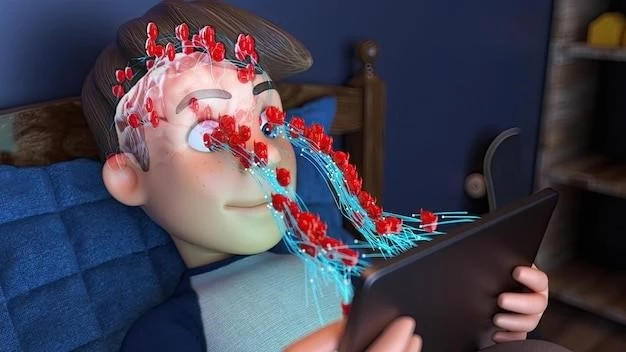Disease ー Infantile Convulsions and Paroxysmal Choreoathetosis‚ Familial
Childhood neurological disorders encompass a range of conditions such as Infantile Spasms‚ Benign Familial Infantile Epilepsy‚ and Paroxysmal Dyskinesias. This article provides insights into Pediatric Seizures‚ Genetic Epilepsy Syndromes‚ and Childhood Convulsions.
Introduction to the Topic
Childhood neurological disorders encompass a variety of conditions that can impact the central nervous system. In this article‚ the focus is on specific disorders such as Infantile Spasms‚ Benign Familial Infantile Epilepsy‚ Benign Familial Infantile Seizure Disorder‚ Paroxysmal Dyskinesias‚ and other related syndromes. These conditions often manifest as Pediatric Seizures‚ Paroxysmal Movement Disorders‚ and Episodic Movement Disorders. Understanding the genetic basis of these disorders is crucial in diagnosing and managing pediatric patients with neurological challenges. This article aims to provide a comprehensive overview of Inherited Epilepsy Syndromes‚ Childhood Convulsions‚ and Childhood Chorea‚ shedding light on the complexities of genetic epilepsy syndromes and the impact they have on the neurological development of children. By delving into the intricacies of these disorders‚ we can better comprehend the unique challenges faced by young patients and work towards improving the diagnosis‚ treatment‚ and quality of life for those affected by these conditions.
Understanding Infantile Spasms and Benign Familial Infantile Epilepsy
Infantile spasms‚ also known as West syndrome‚ are a rare and severe form of epilepsy that typically manifests during infancy. These seizures are characterized by brief‚ uncontrollable muscle contractions that often occur in clusters and can have detrimental effects on a child’s development if not promptly treated. Benign Familial Infantile Epilepsy‚ on the other hand‚ is a less severe form of epilepsy with a genetic component. It usually presents with milder seizure activity and is more responsive to treatment compared to infantile spasms.

Understanding the differences between these two conditions is crucial for healthcare providers to accurately diagnose and provide appropriate interventions for affected children. While infantile spasms require immediate medical attention and often involve a more complex treatment approach‚ benign familial infantile epilepsy tends to have a better prognosis with proper management. By delving into the clinical characteristics‚ underlying genetic factors‚ and treatment options for these disorders‚ healthcare professionals can tailor their care plans to meet the specific needs of each patient affected by infantile spasms or benign familial infantile epilepsy.
Overview of Benign Familial Infantile Seizure Disorder and Paroxysmal Dyskinesias
Benign Familial Infantile Seizure Disorder is a type of epilepsy that typically presents in infancy or early childhood. Unlike more severe forms of epilepsy‚ this disorder is characterized by relatively brief seizure episodes that are often well-controlled with medication and have a favorable long-term outcome. Paroxysmal Dyskinesias‚ on the other hand‚ are episodic movement disorders that can manifest as abnormal‚ involuntary movements and may also have a genetic basis.
By examining the clinical manifestations‚ genetic underpinnings‚ and treatment approaches for Benign Familial Infantile Seizure Disorder and Paroxysmal Dyskinesias‚ healthcare professionals can better understand the nuances of these conditions and provide optimal care to affected individuals. Management strategies may include a combination of medication‚ lifestyle modifications‚ and supportive therapies to help improve the quality of life for those living with these disorders. Through ongoing research and clinical advancements‚ the medical community continues to enhance our understanding of these familial neurological conditions‚ paving the way for improved outcomes and better quality of life for pediatric patients.
Pediatric Seizures and Paroxysmal Movement Disorders
Pediatric seizures encompass a diverse range of neurological conditions that can affect children of varying ages‚ including infants and young adolescents. These seizures can present with different manifestations‚ including convulsions‚ altered consciousness‚ or abnormal movements. Paroxysmal Movement Disorders are episodic neurological conditions that involve involuntary movements‚ such as chorea or dystonia‚ which can be triggered by specific factors or occur spontaneously.
Diagnosing and managing pediatric seizures and paroxysmal movement disorders require a thorough evaluation by healthcare professionals‚ including neurologists‚ pediatricians‚ and other specialists. Treatment strategies may involve antiepileptic medications‚ lifestyle modifications‚ and supportive therapies to help control symptoms and improve the quality of life for affected children. By understanding the underlying causes and triggers of these conditions‚ healthcare providers can tailor individualized treatment plans to address the unique needs of pediatric patients experiencing seizures or paroxysmal movement disorders.
Genetic Epilepsy Syndromes and Neurological Disorders
Genetic epilepsy syndromes are a group of neurological disorders that have a genetic basis and can manifest as various types of seizures‚ including infantile convulsions and paroxysmal choreoathetosis. These syndromes often present challenges in diagnosis and management due to the complex interplay of genetic factors influencing the development of epilepsy.
Neurological disorders‚ particularly those with a genetic component‚ require a multidisciplinary approach involving geneticists‚ neurologists‚ and other healthcare professionals. Understanding the genetic underpinnings of epilepsy syndromes and related neurological disorders is essential for providing personalized care to affected individuals. Genetic testing‚ molecular diagnostics‚ and counseling play crucial roles in identifying specific genetic mutations and guiding treatment decisions.
By exploring the intricate relationship between genetic factors and neurological manifestations‚ healthcare providers can enhance their ability to diagnose‚ treat‚ and support patients with genetic epilepsy syndromes and other related neurological conditions. Ongoing research and advancements in genomic medicine continue to deepen our understanding of these disorders‚ offering new insights into personalized treatment approaches and potential therapeutic interventions.
Childhood Convulsions and Inherited Epilepsy Syndromes
Childhood convulsions are episodes of abnormal electrical activity in the brain that can lead to involuntary muscle contractions‚ altered consciousness‚ and other neurological symptoms. Inherited epilepsy syndromes are a subset of epilepsies that have a genetic component and can be passed down from one generation to another‚ affecting children and adolescents.
Understanding the relationship between childhood convulsions and inherited epilepsy syndromes is essential for diagnosing‚ managing‚ and predicting the prognosis of affected individuals. Genetic testing and family history analysis play a crucial role in identifying inherited epilepsies and tailoring treatment plans to each patient’s specific genetic profile. Early detection and intervention are key in mitigating the impact of these disorders on childhood development and overall well-being;
By delving into the complexities of childhood convulsions and inherited epilepsy syndromes‚ healthcare providers can offer comprehensive care that addresses not only the immediate symptoms but also the long-term implications of these conditions. Collaborative efforts between healthcare professionals‚ genetic counselors‚ and families are vital in navigating the challenges posed by inherited epilepsy syndromes in children‚ paving the way for improved outcomes and quality of life for young patients living with these disorders.
Conclusion⁚ Episodic Movement Disorders and Childhood Chorea
Episodic movement disorders‚ such as chorea and dystonia‚ can significantly impact the lives of children and families affected by these conditions. Childhood chorea‚ characterized by repetitive‚ involuntary movements‚ poses unique challenges in diagnosis and management‚ often requiring a multidisciplinary approach involving neurologists‚ physical therapists‚ and other healthcare specialists.
As we conclude our exploration of episodic movement disorders and childhood chorea within the context of familial neurological conditions‚ it becomes evident that a comprehensive understanding of these disorders is crucial for providing optimal care to pediatric patients. By integrating genetic insights‚ advanced diagnostic techniques‚ and tailored treatment modalities‚ healthcare providers can offer personalized approaches to address the diverse needs of children with these disorders.
Moving forward‚ continued research into the genetic‚ molecular‚ and clinical aspects of episodic movement disorders and childhood chorea will enhance our ability to identify new therapeutic targets and interventions aimed at improving outcomes and quality of life for affected individuals. By fostering collaboration between researchers‚ clinicians‚ and families‚ we can strive towards better outcomes and a deeper understanding of these complex neurological conditions‚ ultimately shaping the future of care for children with familial episodic movement disorders.
